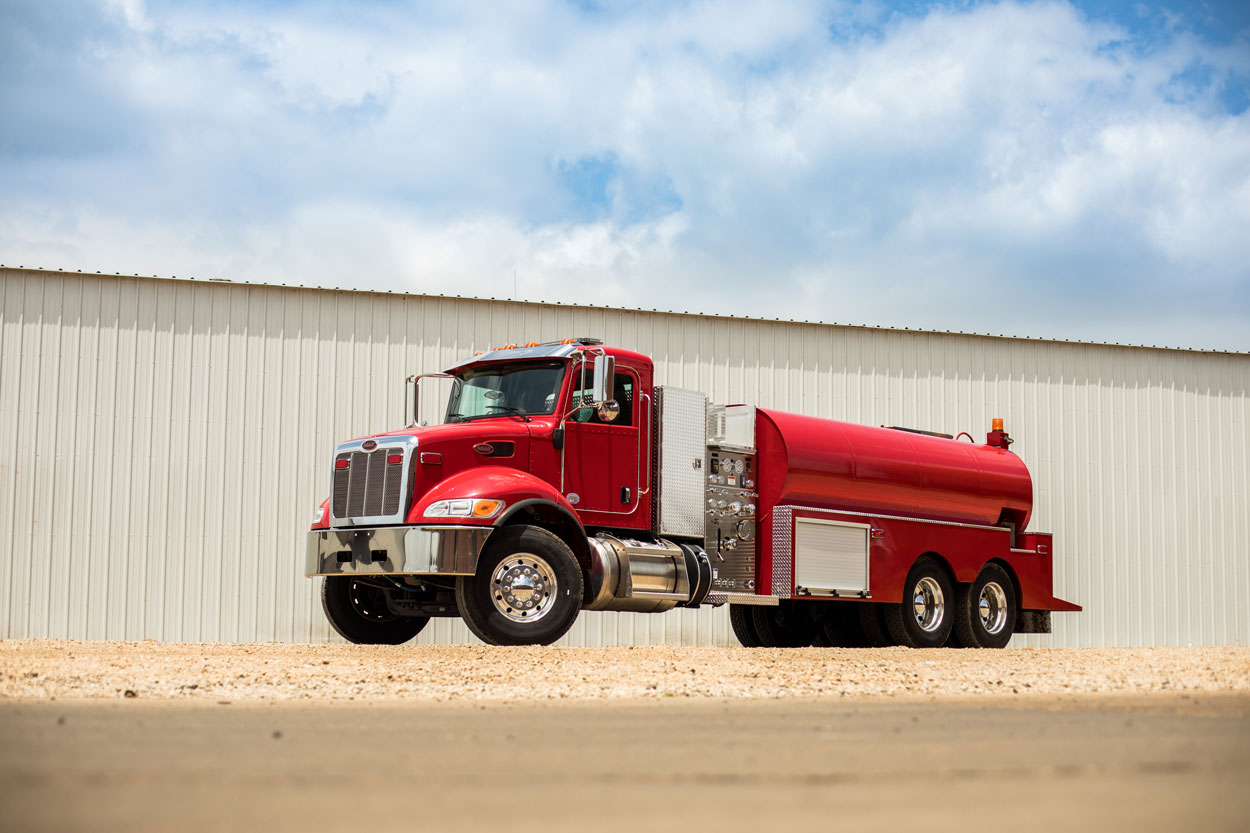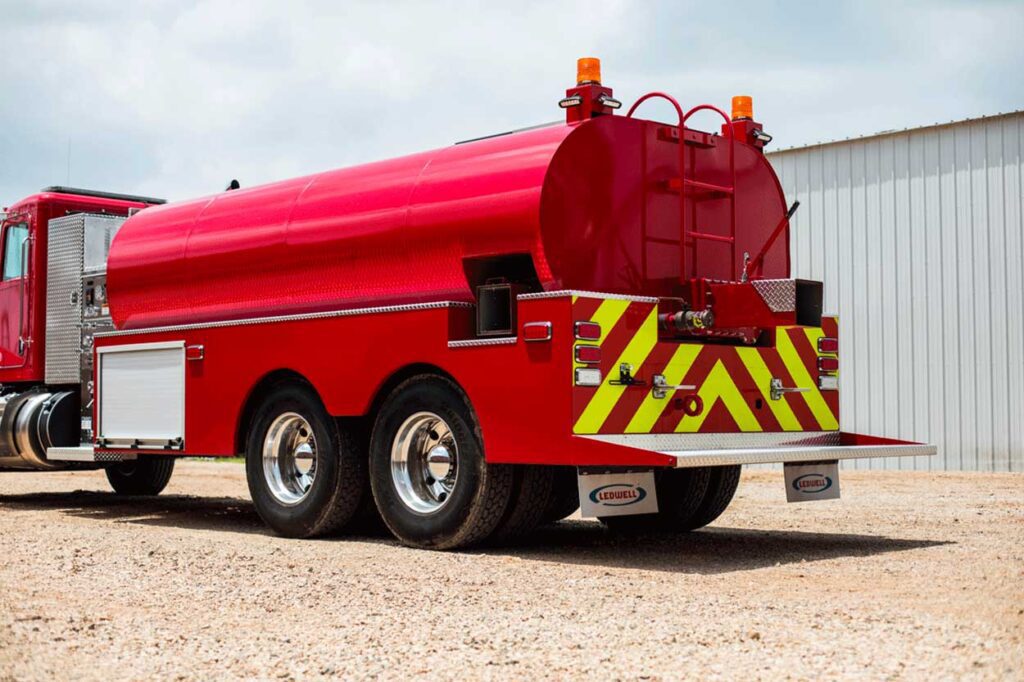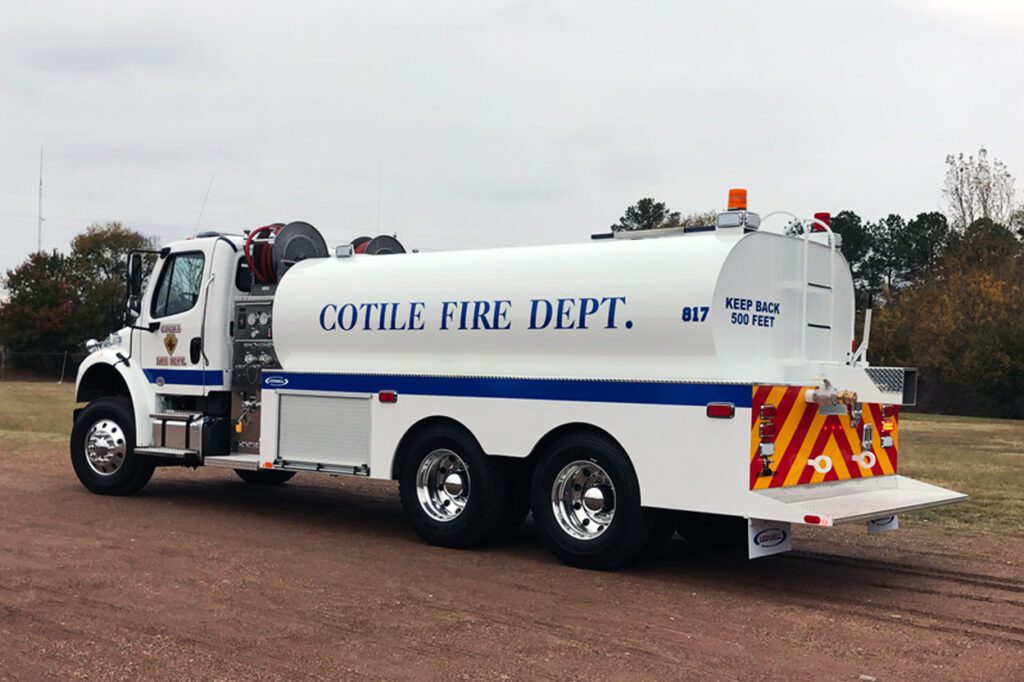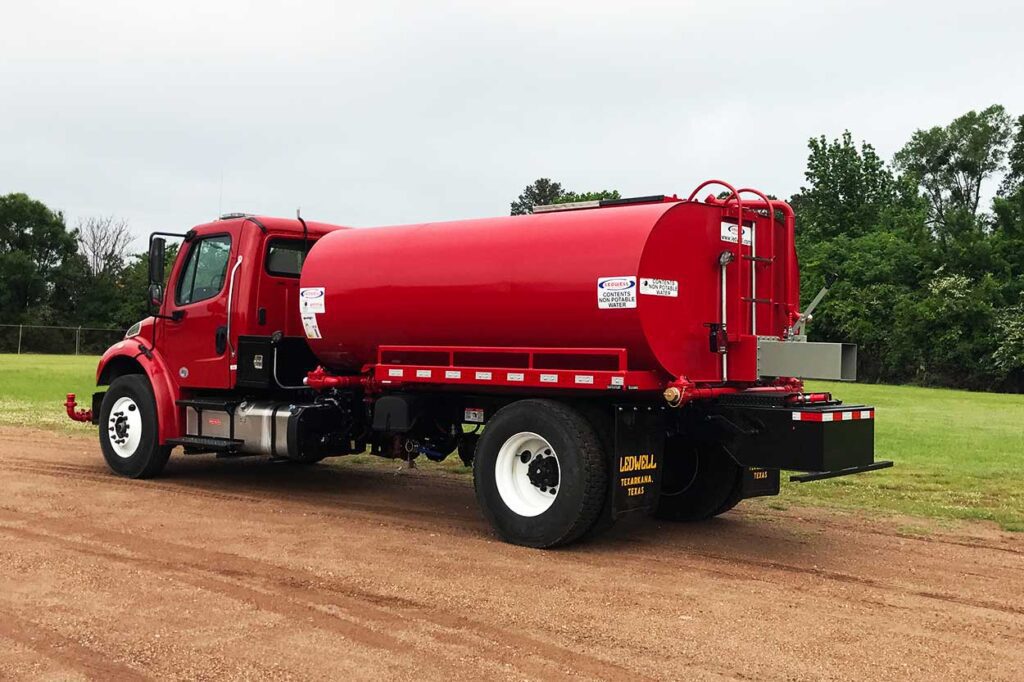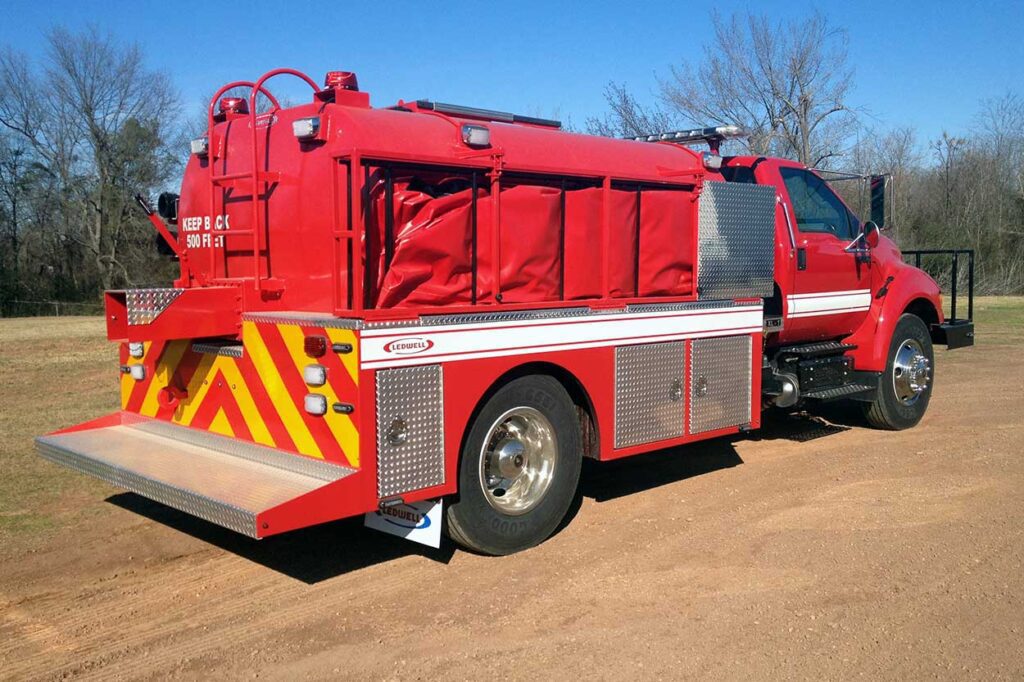Learn to operate your Ledwell Water Truck correctly to extend the life of your equipment by following the steps below or watching this operation video.
Walk around the entire truck to perform a pre-trip inspection. Be sure to check the following: Wheels & tires, PTO for leaks, Driveline for connection, Pump bolts are tightened, and has slow drip at packing.
Primer Tank Valve to be closed if filling via fire hydrant or top fill
To fill tank: Fire Hydrant
Connect the hose with cam lock to fill the pipe at the rear of the tank.
Connect the other end of the hose to a fire hydrant.
Turn hydrant on to begin filling.
While filling the tank, beware of the Road Limit gauge at the tank’s front driver side.
To fill tank: Top Fill
Open manway lid at the top of the tank, if applicable.
Center opening of the tank with the opening of water source
To fill tank: Suction Hose
Close 4″ butterfly valve on the suction side of the pump.
Remove cam lock from suction pipe and attach fill hose.
Open the primer tank valve and allow water to fill the system.
Pull the bleeder valve to allow air to escape.
Engage PTO Set RPM to 1,800 – 2,000 to begin filling the tank.
Once the tank is full, Disengage PTO.
Shut primer tank valve.
Remove the fill hose and replace the camlock cap.
Open 4″ butterfly on suction.
To begin spraying:
Attach side spray, if desired Engage PTO and put the truck in gear.
Pull valves in the cab to activate nozzles – Front/Rear/Side.
Drive as needed to perform spray – being mindful of water movement in the tank
CAUTION: At high engine RPM, do not close all spray valves at once.
Disengage PTO
To spray via Hose Reel:
Engage PTO.
Manually open the gate valve at the rear passenger side of the tank.
Adjust nozzle as needed.
Disengage PTO

